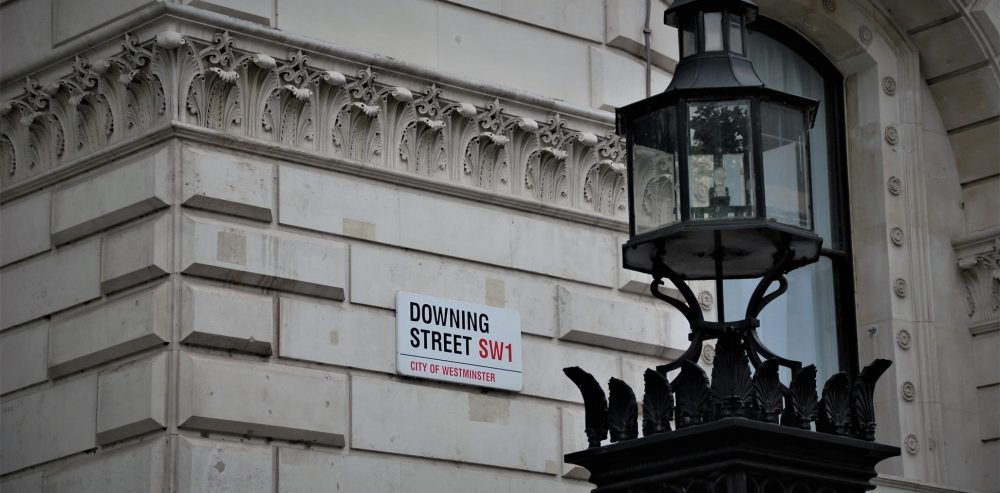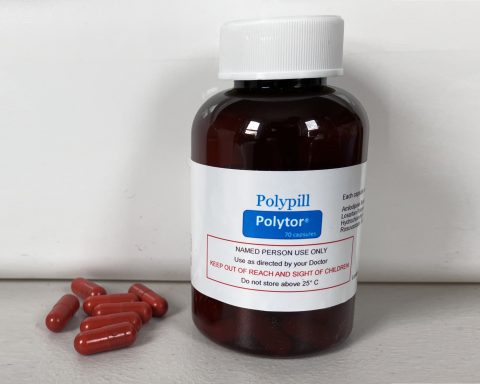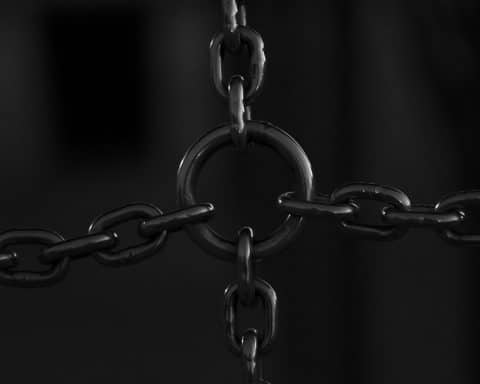
The death of my daughter aged 33 in 2018 was devastating.
After her diagnosis of peritoneal mesothelioma, I moved cities to care for her and made a diary of her and our journey through this illness. I have written a book (unpublished) which explores these topics such as the disease itself, asbestos, palliative care, assisted dying in more depth, set within the narrative of Rose’s illness and death.
I am keen that doctors and students are aware of her disease because I, for one, had never come across it and did not even know it existed. In a young, fit person such as my daughter it can present late as the body can compensate to a remarkable degree. When she presented with fevers and weight loss, her bloods were so deranged that the doctors in the John Radcliffe (JR) could not believe she was still walking around and working (e.g., an albumin of 18, an Hb of 7 and a CRP over 600).
Peritoneal mesothelioma is linked to asbestos, as is pleural mesothelioma. It is now known that there is a genetic susceptibility to mesothelioma, and there is interesting new research into it. It is incurable, but life can be extended with treatment. Thus, it is important that anyone with vague abdominal symptoms, fever, night sweats and loss of weight is asked about possible asbestos exposure. I always thought that asbestos was banned and would only be a problem from its latent effects from the past. I was amazed to discover that it is still being produced and used throughout the world. If anyone wishes to find out more, there is a fantastically informative organisation, the International Ban Asbestos Secretariat. You may be as shocked as I was to learn that asbestos is not banned in the USA.
I was amazed to discover that [asbestos] is still being produced and used throughout the world.
As soon as Rose was in hospital to establish a diagnosis, my roles as mother and doctor became intertwined. Later the third element, carer, was added. Over the course of the next nine months, doors opened that may not have done otherwise, disasters were prevented. Perhaps this is also why I could sometimes distance myself emotionally in order to be able to cope with Rose’s inevitable decline. Rose really just wanted me to be a mum, and her only rule was that I would not hurt her (by taking blood, giving injections etc). This juggling of roles had a rocky path.
I want to concentrate on the communication between her and her clinicians, who were many and from practically every discipline in the hospital.
Doctors tended to talk to me rather than her.
I saw a few examples of brilliant skills, but also many that made me despondent. Knowing that I was a doctor, faced with my often taciturn daughter, I was very aware that doctors tended to talk to me rather than her, and sometimes I had to look out of the window or at something else in the room. They must have thought me rude! But I have always tried in my own consultations to address my attention to the patient.
As doctors we are trained, and train others, how to break bad news, but we are not so good at dealing with uncertainty. As test results came in over the two weeks she spent in hospital, and the picture was unfolding, Rose knew instinctively that there was something seriously wrong. Her job as a medical statistician in the JR gave her a good sense of clinical medicine. When a doctor said to her ‘we are hoping it is TB’, she knew the underlying message. She said “I knew they were all thinking it was something like incurable cancer because no-one made any positive comments. If you have something curable then doctors are always positive”.
How do we balance truth and hope?
She was very perceptive. We are always very quick to give good news and to discuss various diagnoses with our patients, but, when the diagnosis is a probable death sentence as in this case, we flounder. How do we balance truth and hope? As a mother I must try to pursue every angle, as relatives so often do, but as a doctor I knew in my heart that this was offering a false hope. We are taught to reach decisions about treatment along with our patients. Is it really possible to do this when their knowledge is never going to be as complete as ours whatever we tell them, or they read on the internet? Have we a duty to discourage them from spending money and precious time on treatments which have no scientific evidence to support them and which we know will not help them? Do we have the right to deny them hope?
So how did Rose learn that she had cancer? I was in Cambridge packing to return to Oxford and she was alone on the ward. A surgical consultant she had never met came on his ward round and stood at the end of her bed and said ‘We have your biopsy results. You have cancer.’ And then he left.
I think we believe that this doesn’t happen anymore. As Henry Marsh eloquently puts in describing how he approached a patient well known to him: “I walked around the bed and, with my knees cracking, knelt down beside him. To stand over your dying patient would be as inhumane as the long hospital corridors”. And “I have learnt over the years that when breaking bad news, as it is called, it is probably best to speak as little as possible…..I must overcome my urge to talk and talk to fill the sad silence”.1
It is probably best to speak as little as possible ….. I must overcome my urge to talk … to fill the sad silence.
A couple of days later a locum consultant did the round. He obviously had no idea about Rose and obviously hadn’t read her notes. I witnessed his inept and bumbling consultation. I was gratified that the flustered and embarrassed foundation year doctor on the round came back to see Rose and apologised to her for the consultant’s failings.
When I went with her to her first oncology appointment the consultant, about ten minutes after meeting Rose for the first time, said “If you have chemotherapy, we are looking at three to twelve months” She continued to expand that chemo may shrink the tumour but that it was not a cure: in fact, there was no cure. I watched Rose’s face turn pale and rigid.
Later, when Rose was in her ‘angry’ phase of grief, she said to me ‘why did that doctor tell me the prognosis? I didn’t want to know then and she never asked me if I did’. Not a great start to building a relationship and it made me think back to my consultations; we assume people want to know what is wrong with them, but we often never give them the chance to decide what they want us to tell them. It takes more skill and patience to lead them gently to such discussions, to gauge what they want. Not everyone wants to be told they are going to die, even if it is just a question of timing, and that is their right.
Interestingly, my rational and educated daughter told me on the very day three months later that she was ‘going to die this week because “that’s what the consultant said”. This reminds me of a comment in Paul Kalinithi’s lovely book; “Those apocryphal doctors who gave specific numbers: Who were they, I wondered, and who taught them statistics?”2
“Those apocryphal doctors who gave specific numbers: Who were they, I wondered, and who taught them statistics?”
Interestingly, during a subsequent consultation much later with the oncologist, she was much gentler with Rose and I thought I saw tears in her eyes. I met her the day after in town with her young daughter, and I realised they had been tears. However resilient we are as doctors when faced with pain and sadness, we cannot, as mothers, bear to see a mother who will be mourning the loss of their child. I agree this may be a transference, but it is certainly something I always felt.
I must balance these examples with those which demonstrated fantastic communication skills. The palliative care and respiratory consultants were masterful in leading Rose to talk about her hopes and fears. The palliative care consultant said to her at their first meeting ““You are an intelligent person who I am sure understands exactly what your illness means, but that you don’t really want to talk about that, am I right?’” So, finally, someone who was honest yet allowed Rose to dictate what she wanted to know and talk about. After two rounds of chemotherapy, which nearly killed her, the respiratory consultant talked to her about continuing treatment. I wasn’t in that consultation as I decided to step back, and Rose told me that she had decided to stop treatment and that the consultant had agreed with her. She was always keen to go and see this consultant. She was also encouraged by him and her palliative care nurse to go back to see the oncologist, as she had not wanted to go back and see her. She agreed to this, as described above.
So, finally, someone who was honest yet allowed Rose to dictate what she wanted to know and talk about.
These experiences, and there are many more examples, made me ponder the concept of empathy. It is a concept that we are all taught to aspire to, but I found I was no longer so convinced by it. I think there is a confusion, and a lack of vigour, in defining empathy, and it is often confused with sympathy and a naïve belief that we can know how our patients feel. It is more often about how we ourselves feel. We can show compassion, but it is not implicit in compassion that we actually have any idea about the feelings and wishes of our patients. We should listen to our patients and try to understand their situation and how they want us to respond. I tend to agree with Daniel Sokol that kindness is the key to effective consultations.3
Kindness is the key to effective consultations.
Towards the end of her life, having suffered with amazing stoicism, Rose, a strong Christian, asked me “why can’t people in this country decide when they want to die?” And that is a whole other debate and one I won’t go into here. Suffice it to say that Rose had fantastic palliative care, but from the first chemotherapy she spent the following eight months vomiting several times every day and night. She carried around two syringe drivers with drugs to try and combat this, but it never totally worked. So, the argument that palliative care can always help is a narrow one.
Rose had always loved good food. I watched my 11 stone, 5feet 10inch daughter starve to death. She was literally a skeleton when she died.
I hope that this article will achieve at least two things: make GPs and trainees aware of a rare and fatal disease which, if caught early, can allow someone a longer life. Secondly, and mainly, to rethink the way they communicate with, and listen to, their patients, especially when giving bad news and in times of uncertainty.
References
- Henry Marsh. Do No Harm: Stories of Life, Death and Brain Surgery. St Martin’s Press, 2015.
- Paul Kanalithi. When Breath becomes Air. Vintage, 2016. P95.
- Sokol D. How to be a cool headed clinician. BMJ 2012; 344:e3980 doi: https://doi.org/10.1136/bmj.e3980
Featured photo by Noah Silliman on Unsplash








